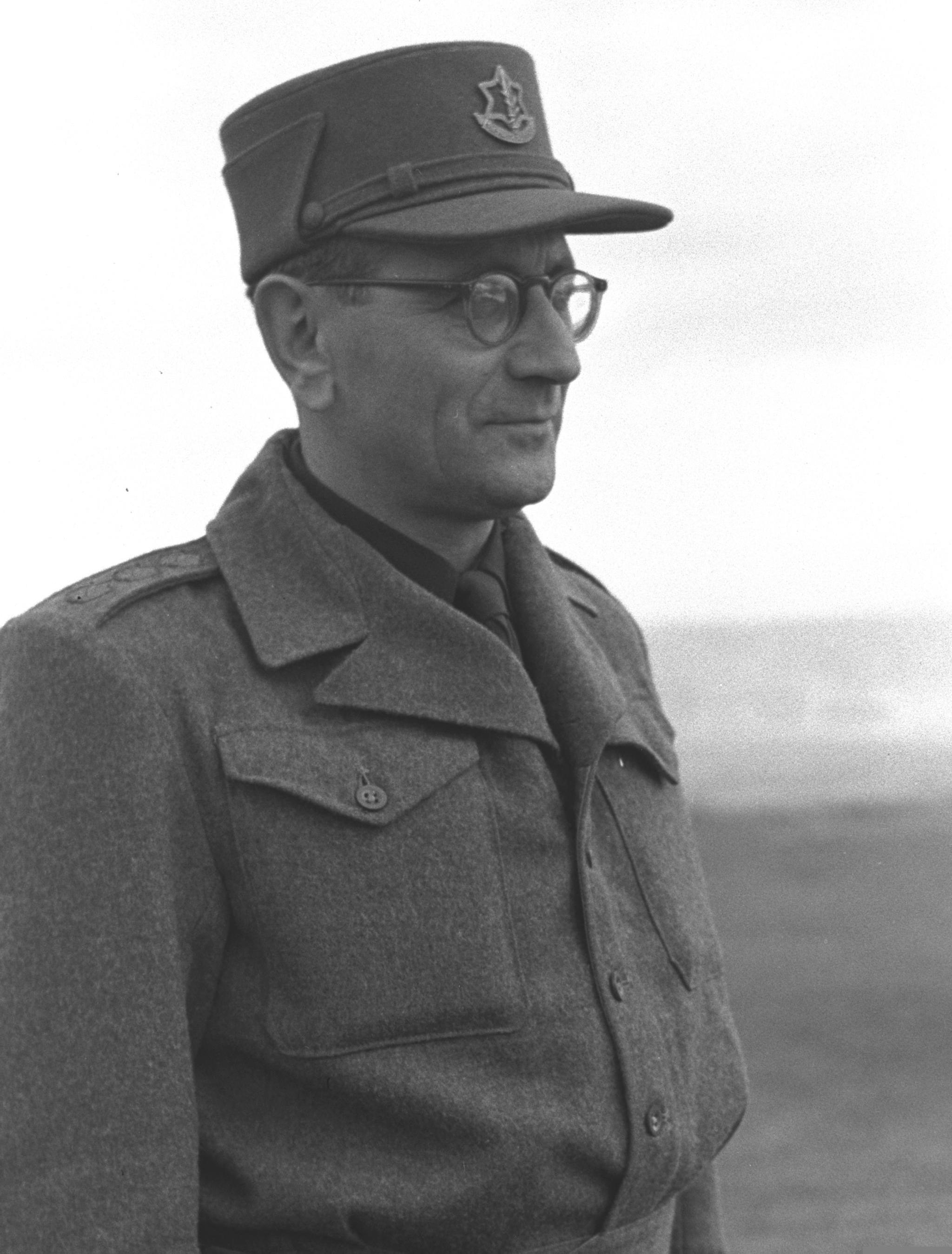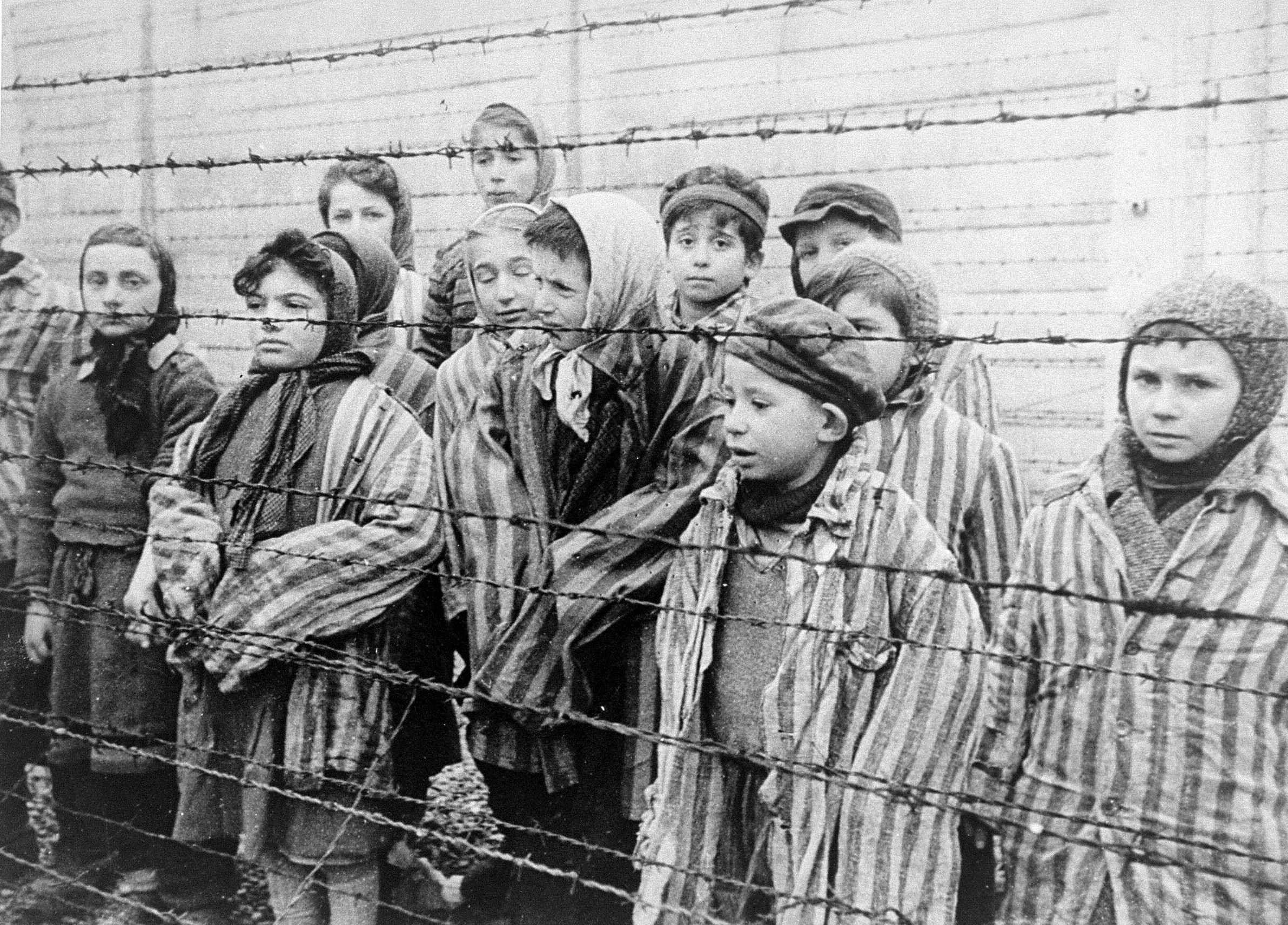|
Kfar Etzion Massacre
The Kfar Etzion massacre refers to a massacre of Jews that took place after a two-day battle in which Jewish Kibbutz residents and Haganah militia defended Kfar Etzion from a combined force of the Arab Legion and local Arab men on May 13, 1948, the day before the Israeli Declaration of Independence. Of the 129 Haganah fighters and Jewish kibbutzniks who died during the defence of the settlement, Martin Gilbert states that fifteen were killed on surrendering. Controversy surrounds the responsibility and role of the Arab Legion in the killing of those who surrendered. The official Israeli version maintains that the kibbutz residents and Haganah soldiers were massacred by local Arabs and the Arab Legion of the Jordanian Army as they were surrendering. The Arab Legion version maintains that the Legion arrived too late to prevent the kibbutz attack by men from nearby Arab villages, which was allegedly motivated by a desire to avenge the massacre of Deir Yassin and the destruction of ... [...More Info...] [...Related Items...] OR: [Wikipedia] [Google] [Baidu] |
Kibbutz
A kibbutz ( he, קִבּוּץ / , lit. "gathering, clustering"; plural: kibbutzim / ) is an intentional community in Israel that was traditionally based on agriculture. The first kibbutz, established in 1909, was Degania. Today, farming has been partly supplanted by other economic branches, including industrial plants and high-tech enterprises. Kibbutzim began as utopian communities, a combination of socialism and Zionism. In recent decades, some kibbutzim have been privatized and changes have been made in the communal lifestyle. A member of a kibbutz is called a ''kibbutznik'' ( he, קִבּוּצְנִיק / ; plural ''kibbutznikim'' or ''kibbutzniks''). In 2010, there were 270 kibbutzim in Israel with population of 126,000. Their factories and farms account for 9% of Israel's industrial output, worth US$8 billion, and 40% of its agricultural output, worth over US$1.7 billion. Some kibbutzim had also developed substantial high-tech and military industries. For example ... [...More Info...] [...Related Items...] OR: [Wikipedia] [Google] [Baidu] |
Gush Etzion Convoy
From November 1947 the roads to the four kibbutzim of Gush Etzion ("The Etzion Bloc"), south of Jerusalem were blockaded by militias from neighbouring villages. The Haganah used a strategy of armed convoys to get supplies to the outposts. The initial convoys to the bloc used open pickup trucks ("tenders"), since the British claimed that armored vehicles would irritate the Arabs. The convoys were accompanied by official Mandate police "monitors" ('' notrim'') in uniform. 11 December 1947 The "Convoy of Ten" was the first failed attempt using this method. Its four vehicles were ambushed on the main road north of King Solomon's pools on December 11, 1947. Ten of the convoy personnel were killed, four injured and only four escaped unhurt. On December 14 an additional person was killed in another attack on a convoy. The Haganah then decided that henceforth it would use armored "sandwich" vehicles in the convoys. 16 January 1948 The "Convoy of 35": As an alternative to the Jerusalem road ... [...More Info...] [...Related Items...] OR: [Wikipedia] [Google] [Baidu] |
Abdullah El-Tell
Abdullah El Tell ( ar, عبدالله التل, 17 July 1918 – 1973) served in the Transjordanian Arab Legion during the 1948 war in Palestine rising from the rank of company commander to become Military Governor of the Old City of Jerusalem. He was later accused of being involved in the assassination of King Abdullah I−which he denied−and spent many years in Egypt before returning to Jordan in 1967. Early life and career El Tell was born into a wealthy family in Irbid just as the Ottoman army were retreating from the town. His mother reportedly held him up to the window to witness the soldiers leaving. His secondary education was in Egypt. When he was 18 years old, he was jailed for demonstrating against the British. In 1941, he joined the British Army and in 1942 completed an officer training course in the Suez Canal area. El Tell's ancestors, the Banu Zaydan, had lived in the Jordanian cities of Amman and Irbid from the 17th century. They adopted the surname El T ... [...More Info...] [...Related Items...] OR: [Wikipedia] [Google] [Baidu] |
Yigal Yadin
Yigael Yadin ( he, יִגָּאֵל יָדִין ) (20 March 1917 – 28 June 1984) was an Israeli archeologist, soldier and politician. He was the second Chief of Staff of the Israel Defense Forces and Deputy Prime Minister from 1977 to 1981. Biography Yigael Sukenik (later Yadin) was born in Ottoman Palestine to archaeologist Eleazar Sukenik and his wife Hasya Sukenik-Feinsold, a teacher and women's rights activist. Military career He joined the Haganah at age 15, and served in a variety of different capacities. In 1946, he left the Haganah following an argument with its commander Yitzhak Sadeh over the inclusion of a machine gun as part of standard squad equipment. In 1948, shortly before the State of Israel declared its independence, Yadin, interrupted his university studies to return to active service. He served as Israel's Head of Operations during the 1948 Arab-Israeli War, and was responsible for many of the key decisions made during the course of that war. In Apri ... [...More Info...] [...Related Items...] OR: [Wikipedia] [Google] [Baidu] |
David Shaltiel
David Shaltiel ( he, דוד שאלתיאל; 16 January 1903 - February 1969) was an Israeli military and intelligence officer, later also diplomat, and was most well known for being the district commander of the Haganah in Jerusalem during the 1948 Arab-Israeli war. Biography David was born on the 16th of January 1903 in Berlin into a Portuguese orthodox Jewish family settled in Hamburg, the oldest son of Benjamin Sealtiel and Helene Wormser. At 16, Shaltiel joined the Zionist youth movement Blau Weiss, and he went to Palestine in 1923. However, he was not happy there, and returned to Europe in 1925. From 1925 to 1930 he was enlisted in the French Foreign Legion. In 1934 he returned to Palestine. There he started working for the Haganah, being charged with buying arms in Europe. In 1936 he was captured in Aachen, Germany, by Gestapo. Shaltiel spent the next three years in prisons/concentration camps, including Dachau and Buchenwald. When he was sent to Berlin in 1939 the Haganah ... [...More Info...] [...Related Items...] OR: [Wikipedia] [Google] [Baidu] |
1947 UN Partition Plan
The United Nations Partition Plan for Palestine was a proposal by the United Nations, which recommended a partition of Mandatory Palestine at the end of the British Mandate. On 29 November 1947, the UN General Assembly adopted the Plan as Resolution 181 (II). The resolution recommended the creation of independent Arab and Jewish States and a Special International Regime for the city of Jerusalem. The Partition Plan, a four-part document attached to the resolution, provided for the termination of the Mandate, the progressive withdrawal of British armed forces and the delineation of boundaries between the two States and Jerusalem. Part I of the Plan stipulated that the Mandate would be terminated as soon as possible and the United Kingdom would withdraw no later than 1 August 1948. The new states would come into existence two months after the withdrawal, but no later than 1 October 1948. The Plan sought to address the conflicting objectives and claims of two competing movements ... [...More Info...] [...Related Items...] OR: [Wikipedia] [Google] [Baidu] |
Gush Etzion
Gush Etzion ( he, גּוּשׁ עֶצְיוֹן, ' Etzion Bloc) is a cluster of Israeli settlements located in the Judaean Mountains, directly south of Jerusalem and Bethlehem in the West Bank. The core group includes four Jewish agricultural villages that were founded in 1943–1947, and destroyed by the Arab Legion before the outbreak of the 1948 Arab–Israeli War, in the Kfar Etzion massacre. The area was left outside of Israel with the 1949 armistice lines. These settlements were rebuilt after the 1967 Six-Day War, along with new communities that have expanded the area of the Etzion Bloc. , Gush Etzion consisted of 22 settlements with a population of 70,000. The international community considers Israeli settlements in the West Bank International law and Israeli settlements, illegal under international law, but the Israeli and US governments dispute this. History The four core original settlements of Gush Etzion were Kfar Etzion (founded in 1943), Massu'ot Yitzhak (19 ... [...More Info...] [...Related Items...] OR: [Wikipedia] [Google] [Baidu] |
Holocaust Survivors
Holocaust survivors are people who survived the Holocaust, defined as the persecution and attempted annihilation of the Jews by Nazi Germany and Axis powers, its allies before and during World War II in Europe and North Africa. There is no universally accepted definition of the term, and it has been applied variously to Jews who survived the war in German-occupied Europe or other Axis territories, as well as to those who fled to Allies (World War II), Allied and Neutral powers during World War II, neutral countries before or during the war. In some cases, non-Jews who also experienced collective persecution under the Nazi regime are also considered Holocaust survivors. The definition has evolved over time. Survivors of the Holocaust include those persecuted civilians who were still alive in the Nazi concentration camps, concentration camps when they were liberated at the end of the war, or those who had either Jewish partisans, survived as partisans or been hidden with the Righte ... [...More Info...] [...Related Items...] OR: [Wikipedia] [Google] [Baidu] |
Hebron
Hebron ( ar, الخليل or ; he, חֶבְרוֹן ) is a Palestinian. city in the southern West Bank, south of Jerusalem. Nestled in the Judaean Mountains, it lies above sea level. The second-largest city in the West Bank (after East Jerusalem), and the third-largest in the Palestinian territories (after East Jerusalem and Gaza), it has a population of over 215,000 Palestinians (2016), and seven hundred Jewish settlers concentrated on the outskirts of its Old City. It includes the Cave of the Patriarchs, which Jewish, Christian, and Islamic traditions all designate as the burial site of three key patriarchal/ matriarchal couples. The city is often considered one of the four holy cities in Judaism. as well as in Islam. Hebron is considered one of the oldest cities in the Levant. According to the Bible, Abraham settled in Hebron and bought the Cave of the Patriarchs as a burial place for his wife Sarah. Biblical tradition holds that the patriarchs Abraham, Isaac, and ... [...More Info...] [...Related Items...] OR: [Wikipedia] [Google] [Baidu] |
Jerusalem
Jerusalem (; he, יְרוּשָׁלַיִם ; ar, القُدس ) (combining the Biblical and common usage Arabic names); grc, Ἱερουσαλήμ/Ἰεροσόλυμα, Hierousalḗm/Hierosóluma; hy, Երուսաղեմ, Erusałēm. is a city in Western Asia. Situated on a plateau in the Judaean Mountains between the Mediterranean Sea, Mediterranean and the Dead Sea, it is one of the List of oldest continuously inhabited cities, oldest cities in the world and is considered to be a holy city for the three major Abrahamic religions: Judaism, Christianity, and Islam. Both Israelis and Palestinians claim Jerusalem as their Capital city, capital, as Israel maintains its primary governmental institutions there and the State of Palestine ultimately foresees it as its seat of power. Because of this dispute, Status of Jerusalem, neither claim is widely recognized internationally. Throughout History of Jerusalem, its long history, Jerusalem has been destroyed at least twice, Sie ... [...More Info...] [...Related Items...] OR: [Wikipedia] [Google] [Baidu] |



